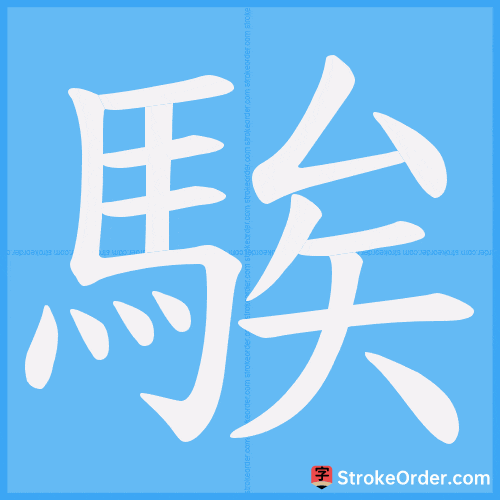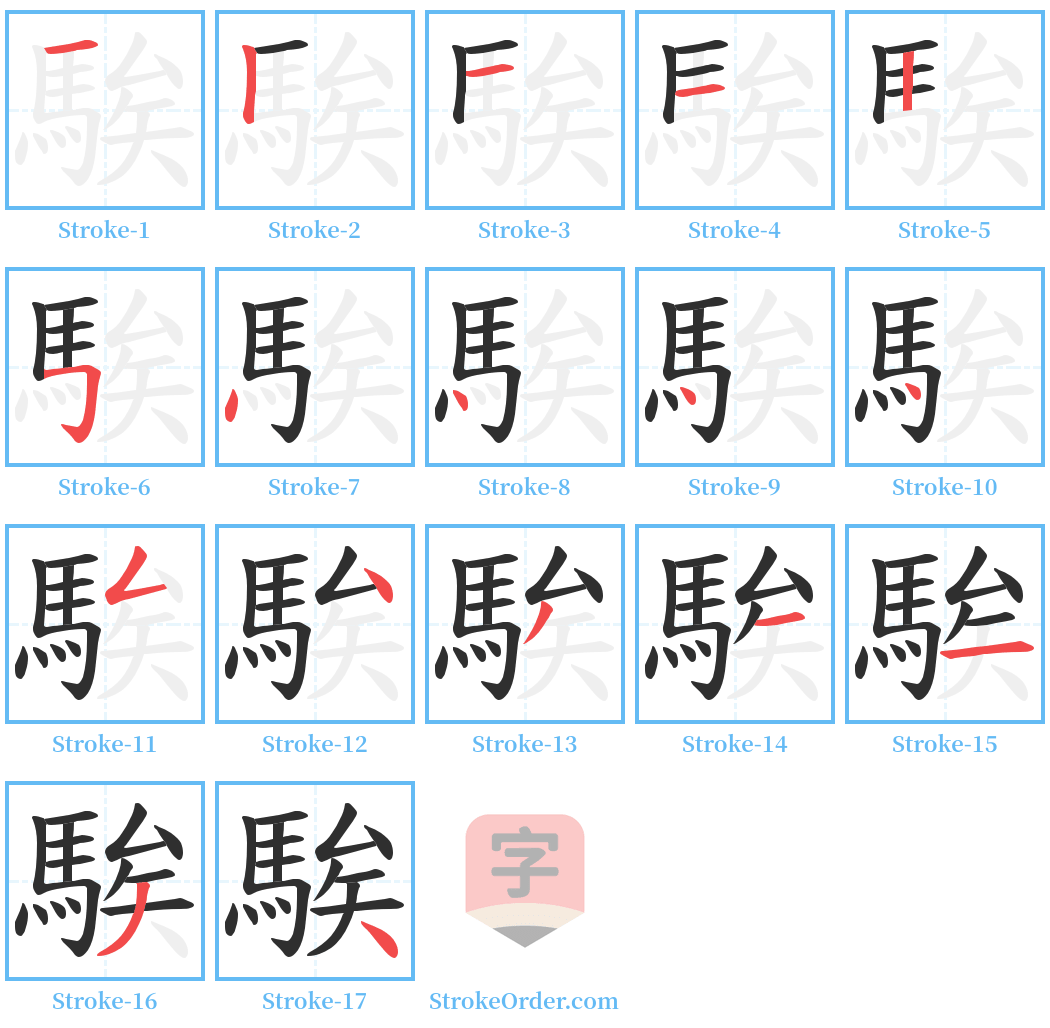騃 Stroke Order
Animated Stroke Order of 騃

Stroke Order Diagrams for 騃

Information of 騃
Pinyin
sì
Radical
馬
Strokes
17 strokes
Usage
★★
Definition
騃
Pronunciation: [ái]
Part of Speech: Adjective
Original Meaning: The appearance of a horse moving vigorously.
Character Formation: Pictophonetic; composed of the component for horse (马) and the sound component (矣) which indicates the pronunciation (sì).
1. A borrowed term for "佁" meaning foolish or ignorant.
(En. stupid)
Example: 騃, 痴 也。——《广雅》 (Translation: "騃 means foolishness." - Guǎngyǎ)
Example: 騃, 无知之貌。——《苍颉篇》 (Translation: "騃 means the appearance of ignorance." - Cāngjié Piān)
Example: 内实騃, 不晓政事。——《汉书·息夫躬传》 (Translation: "Internally ignorant, not understanding political affairs." - Hànshū)
2. Stupid or slow-witted; lacking understanding of matters.
(En. idiotic)
Example: 仆虽騃, 亦粗知自爱。——唐· 韩愈《答刘秀才论史书》 (Translation: "Although I am foolish, I still roughly know how to take care of myself." - Táng, Hán Yǔ)
Example: 騃子 (foolish person); 騃冶 (lovely and foolish beauty).
Additional Notes:
-傻;痴呆的样子。 (Translation: silly; an appearance of foolishness.)
Example: 嘉本典虞騃…其容止举动, 甚蚩騃,语辄自谓“侯身”,时人以为笑。——《三国志·明悼毛皇后传》 (Translation: "Mingdào said that the mannerisms and actions of the foolish were quite foolish, often self-identifying as 'the noble body', which made people laugh." - Sān Guó Zhì)
Example: 痴牛与騃女, 不肯勤农桑。——唐· 卢仝《月蚀》 (Translation: "The foolish ox and the dull girl were unwilling to work diligently on the farms." - Táng, Lú Tóng)